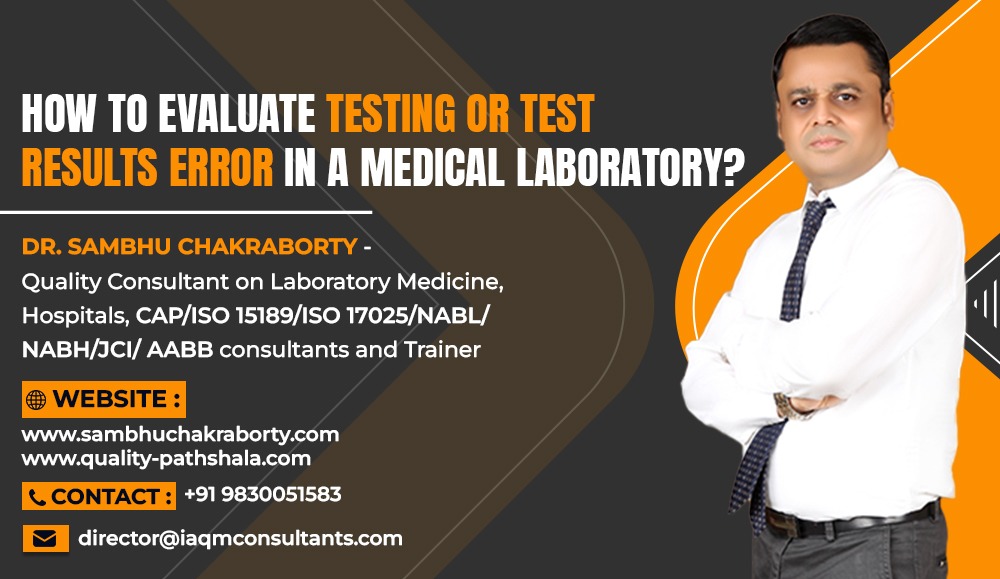Calculating testing or test results error in a medical laboratory involves assessing the accuracy and precision of the test method by comparing the obtained results with the true values or reference values. The error is typically expressed as a percentage or absolute value. Here’s how you can calculate testing error:
- Obtain True Values or Reference Values: As discussed in the previous examples, obtaining true values can be done through certified reference materials, reference methods, or well-established gold standards. These true values represent the accurate concentration or value of the analyte being tested.
- Perform the Test: Run the test using patient samples or samples with known concentrations to generate the test results.
- Calculate Absolute Error: Calculate the absolute error for each test result by subtracting the true value from the obtained test result. The absolute error indicates the magnitude of the deviation from the true value.
Absolute Error = | Test Result – True Value |
Calculate Percentage Error: To express the error as a percentage, divide the absolute error by the true value and multiply by 100.
Percentage Error = (| Test Result – True Value | / True Value) * 100
Calculate Mean Error (Optional): If you have multiple test results, calculate the mean error by taking the average of all absolute errors or percentage errors. The mean error provides a measure of the overall bias of the test method.
Mean Error = (Sum of Absolute Errors or Percentage Errors) / Number of Test Results
Analyze Precision: In addition to accuracy, assess the precision of the test method. Precision refers to the repeatability or reproducibility of the test results. Calculate the standard deviation or coefficient of variation (CV) of the test results to assess precision.
Coefficient of Variation (CV) = (Standard Deviation / Mean) * 100
Report and Interpretation: Report the calculated errors and precision measures in laboratory reports or quality control documents. Interpret the results in the context of the test’s clinical significance and acceptable error limits for the specific analyte being measured.
Keep in mind that testing errors can arise from various sources, including pre-analytical, analytical, and post-analytical factors. Regular quality control and proficiency testing can help monitor and address potential errors in the testing process.
It’s essential to continuously evaluate and improve the accuracy and precision of test methods in the medical laboratory to provide reliable and clinically meaningful test results to patients and healthcare providers.
